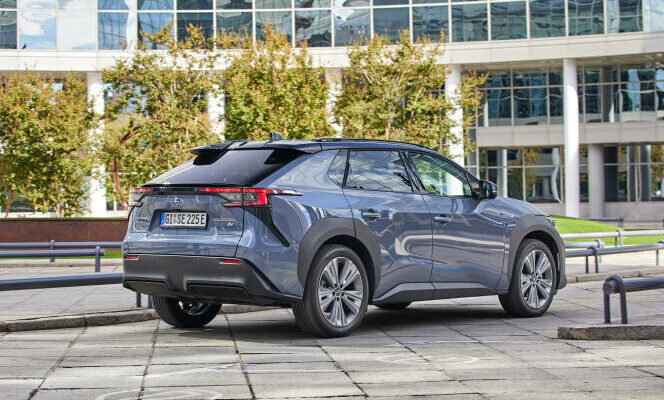With the notable exception of Nissan, the transition to electric is experienced by Japanese brands as an exercise imposed from the outside to which they must, willingly or unwillingly, comply. For Subaru, switching to battery cars was an almost sacrificial step. This small brand from a vast industrial group whose name is that of a cluster of stars in the Pleiades constellation has built its reputation by designing muscular thermal cars, equipped with all-wheel drive and an engine with flat cylinders, with an inimitable sound. To love Subarus is to love engines that burn hydrocarbons and make a funny noise.
King of rallies with the Impreza and snowy excursions with the Outback or the Forester, this manufacturer is very popular in cold countries, in Canada or the United States, which absorb two thirds of its production. In Europe, sales of Subaru, a connoisseur brand which produces just over a million vehicles per year, have been stifled by sanctions imposed on overly exuberant gasoline engines. In France, where the Outback station wagon was hit with a penalty of 16,810 euros in 2023, registrations, which were close to 1,000 units per year in 2012, only totaled 37 last year. However, the aura has not dissipated, and the mere mention of the builder continues to arouse the interest of aesthetes.
We were therefore curious to discover the Solterra, its first electric vehicle. An SUV closely derived from the Toyota bZ4X, the world number one having taken the star brand under its wing. Quite imposing (4.69 m) and not really cheap (prices start at 59,990 euros, with no bonus included), this electric Subaru inherits – a little warmer – the “origami” style, angular and somewhat affected. , dear to most of the latest Toyotas.
The vehicle which, according to Subaru’s language, introduces “change in continuity”, has, as it should, four-wheel drive, a technical option intended to tackle winter roads rather than rough terrain. It also stands out for its fairly firm suspension, but softened steering.
A certain form of originality
In terms of performance, the Solterra delivers honest acceleration (6.9 seconds to go from 0 to 100 km/h), without being exceptional; its 218 available horsepower must still move two tons. The 71.4 kilowatt-hour (kWh) lithium-ion battery announces correct ranges (414 to 465 km, depending on the version), which appear credible in view of the contained consumption averages. The charging capacity is too tight (7 kW) in alternating current, but efficient (150 kW) in direct current on an ultra-fast terminal.
You have 40% of this article left to read. The rest is reserved for subscribers.
